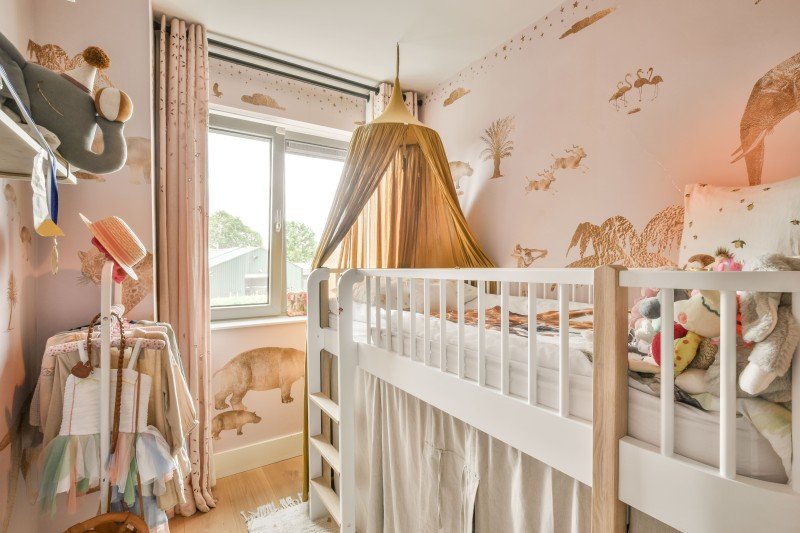Exploring Bunk Beds: A Comprehensive Guide
Bunk beds have actually long been a staple in children's bedrooms, dorm rooms, and even homes with minimal space. Not only do they offer a practical sleeping solution, but they likewise produce a fun and imaginative environment for kids and a great space-saver for adults and households. This post will explore everything you need to learn about bunk beds, from types and products to safety suggestions and buying guidance.
Table of Contents
- Types of Bunk Beds
- Traditional Bunk Beds
- Loft Beds
- Triple Bunk Beds
- L-Shaped Bunk Beds
- Product Options
- Wood
- Metal
- Security Considerations
- Buying Guide
- Frequently asked questions
Types of Bunk Beds
Bunk beds are available in numerous styles to match various needs and preferences. Here's a breakdown of the most typical types:
Conventional Bunk Beds
Traditional bunks generally feature two beds stacked vertically on top of one another. These beds are ideal for siblings sharing a room or for optimizing sleeping space in visitor rooms.
Loft Beds
Loft beds stand similarly to traditional bunk beds however do not have a lower sleeping area. Rather, they typically include a desk or seating area underneath, making them a great choice for little rooms needing multifunctionality.
Triple Bunk Beds
Triple bunk beds are created for 3 residents, with beds stacked in a three-tier configuration. These are less common however can be a fun option for big families or slumber parties.
L-Shaped Bunk Beds
With one bed placed horizontally and the other vertically, L-shaped bunk beds are typically equipped with additional features such as desks or storage drawers and can match corner areas in a room.
Comparison of Bunk Bed Types
| Bed Type | Perfect Use | Description |
|---|---|---|
| Conventional | Shared bed rooms or visitor rooms | Two beds stacked vertically |
| Loft | Small rooms requiring multi-purpose space | Upper bed with open space beneath |
| Triple | Big households or slumber parties | Three beds stacked vertically |
| L-Shaped | Corner or versatile areas | A mix of vertical and horizontal beds |
Product Options
Bunk beds are made from different products, with wood and metal being the most common. Each material has its benefits and drawbacks.
Wood
- Durability: Generally robust and can hold up against years of usage.
- Aesthetic Appeal: Offers a timeless appearance that can mix with different decors.
- Weight Capacity: Typically stronger; can support much heavier weights.
- Disadvantages: May be more costly than metal alternatives and can be prone to scratches.
Metal
- Durability: Generally light-weight and easy to move but still durable.
- Modern Design: Often can be found in smooth designs, making it appealing for contemporary spaces.
- Economical: Usually less costly than wooden choices.
- Downsides: Can be cold to the touch in winter seasons and may not have the same aesthetic appeal for some buyers.
Safety Considerations
When it pertains to bunk beds, security can not be neglected. Here are essential safety tips to remember:
- Guardrails: Ensure that the top bunk has guardrails on both sides to avoid falls.
- Sturdy Construction: Check for a strong construct and sturdy materials to hold up against weight and motion.
- Weight Limit: Adhere to the producer's weight limit for both the upper and lower bunks.
- Ladder Design: Choose bunks with a safe, easy-to-climb ladder and prevent any sharp edges or rungs.
- Age Restrictions: Most producers recommend that kids under the age of 6 should not oversleep the upper bunk.
Purchasing Guide
When searching for bunk beds, think about the following factors to discover the very best suitable for your needs:
- Space Availability: Measure the space size and ceiling height, ensuring there is sufficient space for the leading bunk.
- Bed Size: Decide between twin, complete, or bigger sizes based upon your needs and the size of the room.
- Style Preference: Consider the overall design of the bedroom to find an appropriate design.
- Reduce of Setup: Look for a bunk bed that is straightforward to assemble.
- Spending plan: Bunk beds can be found in numerous price varieties, so determine a spending plan before starting your search.
FAQs
1. What is the suggested age for children to sleep on the leading bunk?
Kids aged six and older are typically suggested to sleep on the leading bunk to lessen the danger of falls.
2. How can I make my bunk bed much safer?
To enhance safety, guarantee guardrails are effectively set up and inspect that the bed is put on a flat surface. Furthermore, motivate children to use the ladder carefully.
3. Can I convert a bunk bed into two different beds?
Many bunk beds are developed to be convertible. Inspect the maker's requirements for convertibility features.
4. What devices are offered for bunk beds?
Typical devices include bed linens, storage drawers, staircases instead of ladders, and tented canopies for an enjoyable visual appeal.
5. How do Maxwell Landry keep my bunk bed?
Routine checks for loose screws or structural integrity can help ensure security. Dust the bed routinely and clean spills promptly to keep the materials in good condition.
Bunk beds are versatile and a space-efficient service for different living situations, from kids's rooms to visitor lodgings. With numerous designs and materials readily available, possible purchasers have a wealth of choices to consider, making sure a combination of practicality and visual appeals. By prioritizing safety and following the tips described in this guide, people can find the best bunk bed that matches their space and lifestyle, all while creating a pleasurable sleeping environment.

